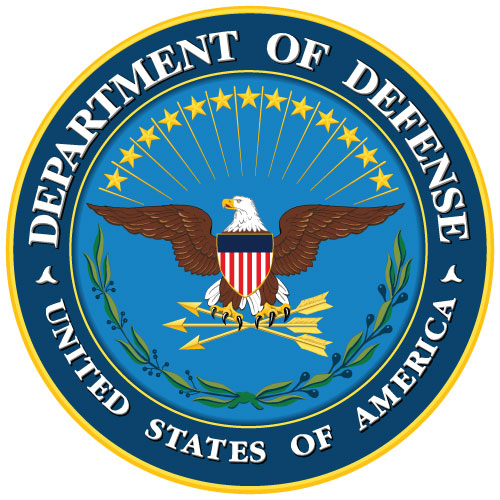open source communities
See the following -
11 Ways To Get Involved With Humanitarian FOSS
 Lending a digital hand for humanitarian projects is just a click away. Whether you have five minutes or a few hours, you can make a difference with a variety of Humanitarian Free and Open Source Software (HFOSS) projects. The level of skills required vary from web search, verification, mapping, translation, training, and open source software development. Along the journey of changing the world, you can meet like minds and hone your skills. The key is to ask yourself: What do I want to do? How can I get started? How can I find the right project and community?
Lending a digital hand for humanitarian projects is just a click away. Whether you have five minutes or a few hours, you can make a difference with a variety of Humanitarian Free and Open Source Software (HFOSS) projects. The level of skills required vary from web search, verification, mapping, translation, training, and open source software development. Along the journey of changing the world, you can meet like minds and hone your skills. The key is to ask yourself: What do I want to do? How can I get started? How can I find the right project and community?
- Login to post comments
5 Reasons Professors Should Encourage Students to Get Involved in Open Source Projects
 I've been supporting student participation in humanitarian free and open source software (HFOSS) projects for over a decade. I've seen students get motivated and excited by working in a professional community while they learn and mature professionally. Out of the many reasons for supporting student participation in open source, here are five of the most compelling reasons...
I've been supporting student participation in humanitarian free and open source software (HFOSS) projects for over a decade. I've seen students get motivated and excited by working in a professional community while they learn and mature professionally. Out of the many reasons for supporting student participation in open source, here are five of the most compelling reasons...
- Login to post comments
6 Examples Of Open Source Best Practices In Knowledge-Sharing Projects
 The very effort of creating open source software is a massive knowledge-sharing experience, covering all the domains of software development with many methods and practices. Although there is rarely only one way to achieve a goal, open source communities have, over time, honed their knowledge into best practices as a natural byproduct of the open collaboration and transparency passed on within their respective communities. But what about best practices that span communities, which are useful beyond the unique needs of a single project and broadly applicable to any and all open source software efforts? I'll look at six different knowledge-sharing communities that take six approaches to gathering, maintaining, and distributing their best practices.
The very effort of creating open source software is a massive knowledge-sharing experience, covering all the domains of software development with many methods and practices. Although there is rarely only one way to achieve a goal, open source communities have, over time, honed their knowledge into best practices as a natural byproduct of the open collaboration and transparency passed on within their respective communities. But what about best practices that span communities, which are useful beyond the unique needs of a single project and broadly applicable to any and all open source software efforts? I'll look at six different knowledge-sharing communities that take six approaches to gathering, maintaining, and distributing their best practices.
- Login to post comments
6 Growing Pains of Open Source Organizations That You Can Avoid
 Everything has a season, and as organizations age—communities, charities, companies, churches and more—they face similar diseases of time. These are emergent patterns of failure that arise not from mistakes but from the consequences of earlier success. In open source, we are seeing the same patterns emerge; this should not be a surprise. Some of them are unavoidable. Understanding them helps leaders reduce the risk that will arise and helps identify them when they do. This is by no means a comprehensive list, but we have encountered all of these modes of systemic failure, some of them often...
Everything has a season, and as organizations age—communities, charities, companies, churches and more—they face similar diseases of time. These are emergent patterns of failure that arise not from mistakes but from the consequences of earlier success. In open source, we are seeing the same patterns emerge; this should not be a surprise. Some of them are unavoidable. Understanding them helps leaders reduce the risk that will arise and helps identify them when they do. This is by no means a comprehensive list, but we have encountered all of these modes of systemic failure, some of them often...
- Login to post comments
A Better Marketing Plan for Your Open Source Software Project
 OSS marketing has evolved since the emergence of OSS in the 1990s and early 2000s. It now includes the community at every step of the life cycle (a fact that shouldn’t surprise anyone familiar with open source communities’ expectations for inclusivity). It also outperforms traditional command-and-control approaches to marketing, because it’s built on the strength and reach of project communities. A community that’s bought into a marketing program will generate far more content than a marketing team alone can. We aim here to describe a process for inclusive marketing that any technology marketer can apply to increase impact.
OSS marketing has evolved since the emergence of OSS in the 1990s and early 2000s. It now includes the community at every step of the life cycle (a fact that shouldn’t surprise anyone familiar with open source communities’ expectations for inclusivity). It also outperforms traditional command-and-control approaches to marketing, because it’s built on the strength and reach of project communities. A community that’s bought into a marketing program will generate far more content than a marketing team alone can. We aim here to describe a process for inclusive marketing that any technology marketer can apply to increase impact.
- Login to post comments
A Free, Open Resource to Solve Our Third World Problems
 Corruption, poverty, war, hunger, healthcare, education, safety. These are only a few of the problems faced by people in developing countries. Many of these problems are caused by exclusion, fear, intimidation, broken infrastructure, and lack of money, resources, access to information, and tools. These are hard problems to solve but, as Theodore Roosevelt said: "Nothing in this world is worth having or worth doing unless it means effort, pain, difficulty." At the core of open source are communities. Communities of like-minded individuals, working together, openly and freely sharing ideas and solutions for the benefit of others...
Corruption, poverty, war, hunger, healthcare, education, safety. These are only a few of the problems faced by people in developing countries. Many of these problems are caused by exclusion, fear, intimidation, broken infrastructure, and lack of money, resources, access to information, and tools. These are hard problems to solve but, as Theodore Roosevelt said: "Nothing in this world is worth having or worth doing unless it means effort, pain, difficulty." At the core of open source are communities. Communities of like-minded individuals, working together, openly and freely sharing ideas and solutions for the benefit of others...
- Login to post comments
A Guide To Productivity Management In Open Source Projects
 Open source is one of the most important technology trends of our time. It’s the lifeblood of the digital economy and the preeminent way that software-based innovation happens today. In fact, it’s estimated that over 90% of software released today contains open source libraries. There's no doubt the open source model is effective and impactful. But is there still room for improvement? When comparing the broader software industry’s processes to that of open source communities, one big gap stands out: productivity management. By and large, open source project leads and maintainers have been slow to adopt modern productivity and project management practices and tools commonly embraced by startups and enterprises to drive the efficiency and predictability of software development processes. It’s time we examine how the application of these approaches and capabilities can improve the management of open source projects for the better.
Open source is one of the most important technology trends of our time. It’s the lifeblood of the digital economy and the preeminent way that software-based innovation happens today. In fact, it’s estimated that over 90% of software released today contains open source libraries. There's no doubt the open source model is effective and impactful. But is there still room for improvement? When comparing the broader software industry’s processes to that of open source communities, one big gap stands out: productivity management. By and large, open source project leads and maintainers have been slow to adopt modern productivity and project management practices and tools commonly embraced by startups and enterprises to drive the efficiency and predictability of software development processes. It’s time we examine how the application of these approaches and capabilities can improve the management of open source projects for the better.
- Login to post comments
A Primer on the Open Source Movement from a Health Care Perspective
 Open source, in myriad forms, has emerged as a significant development model that drives both innovation and technological dispersion. Ignore it at your peril, as did the major computer companies destroyed or totally remade by Linux and free software, or encyclopedia publishers by Wikipedia, or journalists and marketers by social media. The term "open source" was associated first with free software, but it goes far beyond software now. People around the world use open hardware, demand open government, share open data, and--yes--pursue open health. The field of health, in particular, will be transformed by open source principles in software, in research, in consultations and telemedicine, and in the various forms of data sharing all these processes call for.
Open source, in myriad forms, has emerged as a significant development model that drives both innovation and technological dispersion. Ignore it at your peril, as did the major computer companies destroyed or totally remade by Linux and free software, or encyclopedia publishers by Wikipedia, or journalists and marketers by social media. The term "open source" was associated first with free software, but it goes far beyond software now. People around the world use open hardware, demand open government, share open data, and--yes--pursue open health. The field of health, in particular, will be transformed by open source principles in software, in research, in consultations and telemedicine, and in the various forms of data sharing all these processes call for.
- Login to post comments
Addressing Open Source's Free Rider Problem
 Nadia Eghbal, in her major report on the state of our digital infrastructure, and Jonathan Lister, in his response describing our digital ecosystem, both point to a tragedy of the commons in open source software. While some projects are sustainable, many still struggle with "a free rider problem." As Nadia puts it: "Resources are offered for free, and everybody (whether individual developer or large software company) uses them, so nobody is incentivized to contribute back, figuring that somebody else will step in"...
Nadia Eghbal, in her major report on the state of our digital infrastructure, and Jonathan Lister, in his response describing our digital ecosystem, both point to a tragedy of the commons in open source software. While some projects are sustainable, many still struggle with "a free rider problem." As Nadia puts it: "Resources are offered for free, and everybody (whether individual developer or large software company) uses them, so nobody is incentivized to contribute back, figuring that somebody else will step in"...
- Login to post comments
DoD Announces the Launch of “Code.mil,” an Experiment in Open Source
 The Department of Defense (DoD) announced the launch of Code.mil, an open source initiative that allows software developers around the world to collaborate on unclassified code written by federal employees in support of DoD projects. DoD is working with GitHub, an open source platform, to experiment with fostering more collaboration between private sector software developers and federal employees on software projects built within the DoD. The Code.mil URL redirects users to an online repository that will house code written for a range of projects across DoD for individuals to review and make suggested changes...
The Department of Defense (DoD) announced the launch of Code.mil, an open source initiative that allows software developers around the world to collaborate on unclassified code written by federal employees in support of DoD projects. DoD is working with GitHub, an open source platform, to experiment with fostering more collaboration between private sector software developers and federal employees on software projects built within the DoD. The Code.mil URL redirects users to an online repository that will house code written for a range of projects across DoD for individuals to review and make suggested changes...
- Login to post comments
Get Emotional: Tips for Open Source Communities
 Humans are driven quite a bit by emotions. You may be a rational human being, but your emotions will still drive many of your choices. You can be excited, angry, interested, or sad about things—it doesn't matter—you'll react to those emotions and you'll very often leak that into your communications. You'll likely leak your emotions, and so will other members of the community. If you think humans should suck it up and act like nothing is happening, I'm afraid you are living in a bubble. That is not how humans operate. That's not how humans interact...
Humans are driven quite a bit by emotions. You may be a rational human being, but your emotions will still drive many of your choices. You can be excited, angry, interested, or sad about things—it doesn't matter—you'll react to those emotions and you'll very often leak that into your communications. You'll likely leak your emotions, and so will other members of the community. If you think humans should suck it up and act like nothing is happening, I'm afraid you are living in a bubble. That is not how humans operate. That's not how humans interact...
- Login to post comments
How Telecoms Can Escape Vendor Lock-In With Open Source NFV
 Today, Network Functions Virtualization (NFV) takes software applications that run on proprietary hardware and allows them to run on standard x86 servers. This allows core network infrastructure to dynamically allocate network, compute and storage to satisfy workloads on-demand. It also allows you to move these workloads to different servers, or even different data centers as needed, and to scale up or scale down without changing the underlying hardware. NFV provides you with a modern agile environment to respond to customers needs, get to market quickly with new services, and reduce both capital and operational expenditures...
Today, Network Functions Virtualization (NFV) takes software applications that run on proprietary hardware and allows them to run on standard x86 servers. This allows core network infrastructure to dynamically allocate network, compute and storage to satisfy workloads on-demand. It also allows you to move these workloads to different servers, or even different data centers as needed, and to scale up or scale down without changing the underlying hardware. NFV provides you with a modern agile environment to respond to customers needs, get to market quickly with new services, and reduce both capital and operational expenditures...
- Login to post comments
How to Care for the Community Over the Code
 At All Things Open 2016, Joe Brockmeier answers the question: How can companies can work effectively with open source communities? In his talk, Joe reminded us of the #1 open source myth: Open source is comprised of mostly volunteers. The truth is, these days, pretty much any major open source project has people who are paid to work on it. There are always people who do it because they love it, but these days most of us are paid (and still love it). Over the years we have learned that if you want patches in a timely manner, you need people who are paid to do it...
At All Things Open 2016, Joe Brockmeier answers the question: How can companies can work effectively with open source communities? In his talk, Joe reminded us of the #1 open source myth: Open source is comprised of mostly volunteers. The truth is, these days, pretty much any major open source project has people who are paid to work on it. There are always people who do it because they love it, but these days most of us are paid (and still love it). Over the years we have learned that if you want patches in a timely manner, you need people who are paid to do it...
- Login to post comments
How to Care for the Community Over the Code
 At All Things Open 2016, Joe Brockmeier answers the question: How can companies can work effectively with open source communities? In his talk, Joe reminded us of the #1 open source myth: Open source is comprised of mostly volunteers. The truth is, these days, pretty much any major open source project has people who are paid to work on it. There are always people who do it because they love it, but these days most of us are paid (and still love it). Over the years we have learned that if you want patches in a timely manner, you need people who are paid to do it...
At All Things Open 2016, Joe Brockmeier answers the question: How can companies can work effectively with open source communities? In his talk, Joe reminded us of the #1 open source myth: Open source is comprised of mostly volunteers. The truth is, these days, pretty much any major open source project has people who are paid to work on it. There are always people who do it because they love it, but these days most of us are paid (and still love it). Over the years we have learned that if you want patches in a timely manner, you need people who are paid to do it...
- Login to post comments
How To Make App Stores Friendly To Open Source
 Microsoft recently seemed to propose that Open Source software didn’t belong in the Windows app store. Excuse me? After the news broke, Giorgio Sardo, Microsoft’s General Manager of the Microsoft Store, argued on Twitter that it wasn’t Microsoft’s intent. “We absolutely want to support developers distributing successful OSS apps. In fact, there are already fantastic OSS apps in the Store! The goal of this policy is to protect customers from misleading listings.” Predictably, confusion results. And the kerfuffle over FairEmail and the Google Play Store earlier this year is a good example of how this sort of confusion is not entirely new, leading to questions about intent. I’ve talked with developers and business managers about their experience in preparing software packages for commercial app stores. Universally, everyone reports having issues with app stores’ packaging. These include...
Microsoft recently seemed to propose that Open Source software didn’t belong in the Windows app store. Excuse me? After the news broke, Giorgio Sardo, Microsoft’s General Manager of the Microsoft Store, argued on Twitter that it wasn’t Microsoft’s intent. “We absolutely want to support developers distributing successful OSS apps. In fact, there are already fantastic OSS apps in the Store! The goal of this policy is to protect customers from misleading listings.” Predictably, confusion results. And the kerfuffle over FairEmail and the Google Play Store earlier this year is a good example of how this sort of confusion is not entirely new, leading to questions about intent. I’ve talked with developers and business managers about their experience in preparing software packages for commercial app stores. Universally, everyone reports having issues with app stores’ packaging. These include...
- Login to post comments